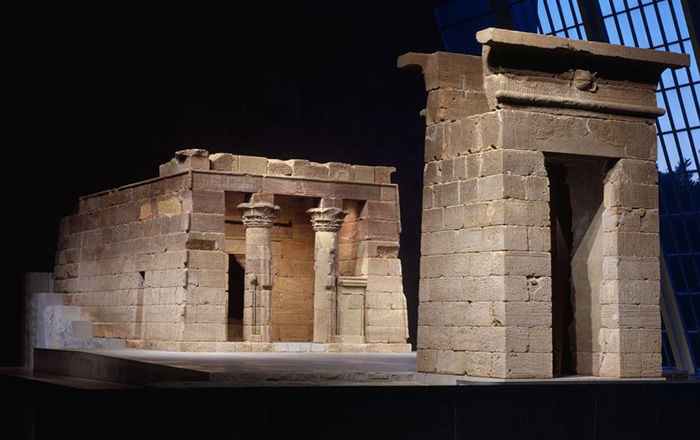Two-handled Jar
Roman Period
This fine two-handled vessel, which likely once had a flat lid, is made of purple- and turquoise-glazed faience, a vitreous material of ground quartz mixed with small amounts of lime and natron or plant ash. Alternating vegetal designs, identified as narrow rushes and flowering lettuce plants, adorn the vessel's body, while the band of leaves crowning its shoulder are reminiscent of myrtle leaf wreaths. Both of these motifs symbolise fecundity: in the Hellenic world, myrtle was associated with Aphrodite and Demeter, the goddesses of love and the harvest, while lettuce was linked with the Egyptian fertility god Min.
The garland is evocative of the custom of draping the shoulders of cinerary urns with bronze or vegetal wreaths, introduced to Egypt by Alexandrian Greeks in the Ptolemaic period. It may also relate to the Egyptian practice of placing garlands around the necks of mummified people, which dates back to the New Kingdom. These also resemble the wreaths depicted on Roman Period funerary panel portraits and masks. While the vessel's decoration suggests that it could have been used in a funerary context, it may also have been used in daily life as a storage jar.
